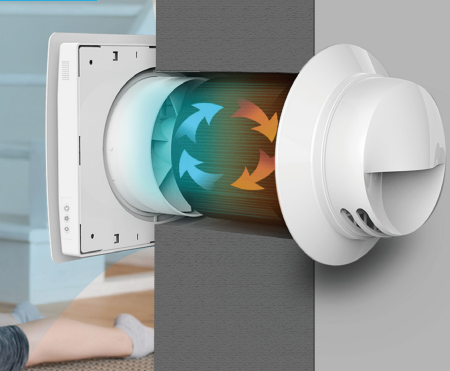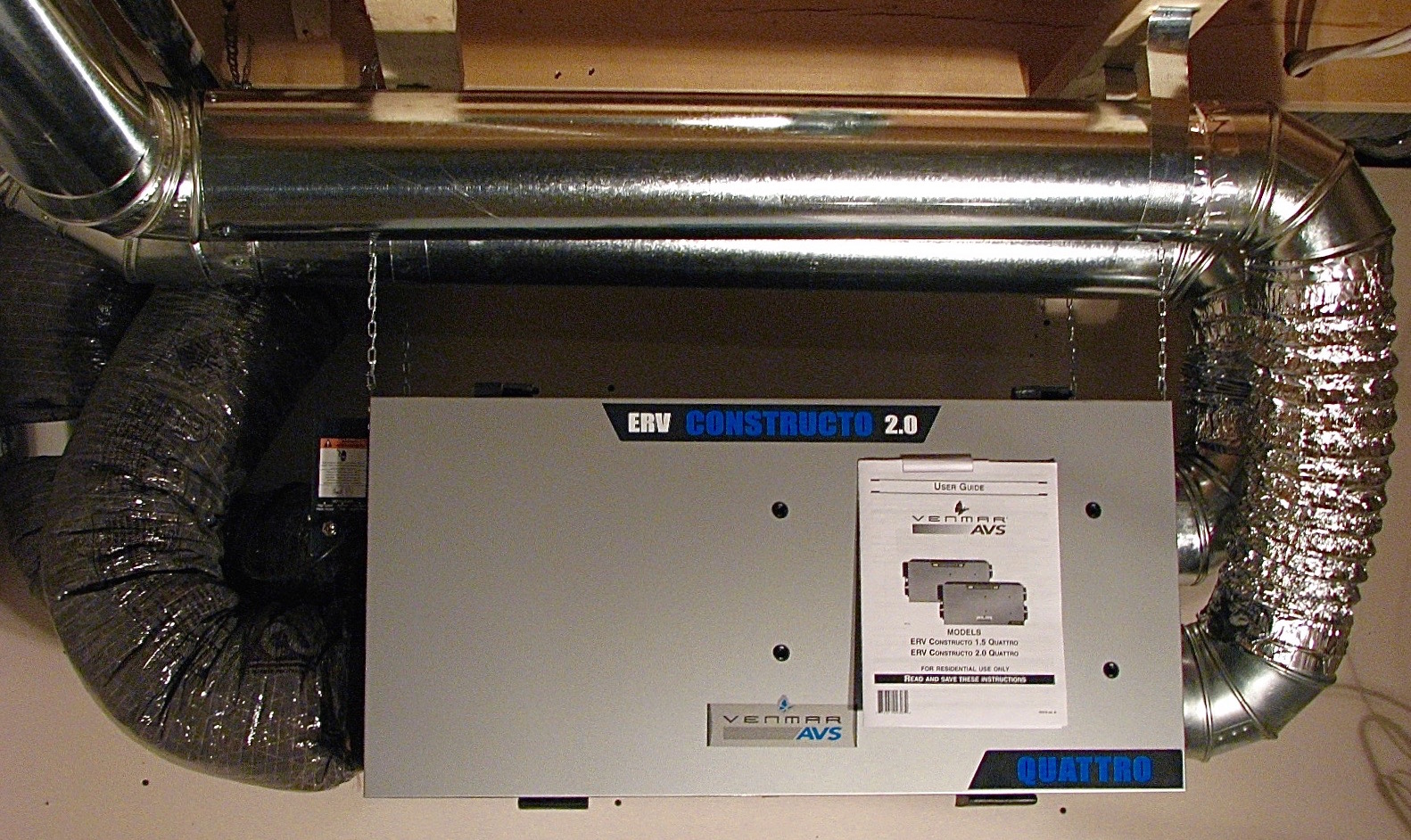How Long Does HRV Remain Effective? Exploring System Lifespan
Wiki Article
Unveiling the Key Conveniences and Uses of Heat Recovery Ventilation in Lasting Design
Heat Recovery Ventilation (HRV) systems play an important duty in lasting style. They facilitate a continuous exchange of stagnant indoor air with fresh exterior air, substantially boosting interior air high quality. Moreover, HRVs add to power effectiveness by redeeming warmth from exhausted air, which can reduce energy prices. Comprehending the multifaceted benefits and applications of HRVs discloses their value in modern design. What other advantages do these systems provide in the search of sustainability?Comprehending Heat Recovery Ventilation Equipments
Heat recovery ventilation (HRV) systems are designed to improve interior air quality while minimizing energy loss. These systems make use of a mechanical ventilation technique to exchange stagnant indoor air with fresh outdoor air, guaranteeing a continual supply of tidy air. By catching warmth from the exhaust air, HRVs precondition incoming air, reducing the need on heating and cooling systems. This procedure not just enhances thermal comfort yet likewise adds to energy performance in domestic and commercial buildings. Furthermore, HRV systems help control moisture levels and reduce indoor pollutants, promoting a much healthier living environment. Their critical implementation is crucial for achieving lasting design objectives, as they offer an equilibrium between energy preservation and occupant wellness.How HRV Systems Work
While numerous might recognize with air flow systems, comprehending just how warmth recuperation air flow (HRV) systems run is crucial for appreciating their benefits. HRV systems function by exchanging stale interior air with fresh exterior air while moving warmth between the two streams. This process occurs in a warmth exchanger, where warm from the outbound air heats the inbound air during colder months, minimizing energy loss. Alternatively, in warmer months, the system can cool down incoming air using the cooler outgoing air. HRVs are outfitted with followers to assist in air flow and filters to eliminate particulates, guaranteeing a continuous, well balanced air flow process. This cutting-edge style not only enhances power efficiency yet also adds to maintaining a comfortable indoor environment.Enhancing Indoor Air High Quality
Interior air top quality can significantly affect wellness and well-being, making efficient air flow essential in modern-day homes. Heat Recovery Ventilation (HRV) systems play a necessary function in preserving indoor air quality by constantly trading stale indoor air with fresh outdoor air. This process not only lowers air-borne contaminants but also minimizes humidity degrees, which can lead to mold and mildew growth and breathing issues. HRV systems filter inbound air, removing irritants and particulates, therefore supplying a much healthier living setting. Furthermore, these systems aid get rid of smells and unpredictable organic substances (VOCs) generally located in home products. By making certain a consistent circulation of tidy air, HRV systems add to a total enhanced interior ambience, promoting convenience and well-being for residents.Power Efficiency and Cost Savings
Power efficiency sticks out as a significant advantage of Heat Recovery Ventilation (HRV) systems. By capturing and reusing the warmth from exhausted indoor air, HRVs reduce the energy needed for home heating inbound fresh air, resulting in decreased power intake. This performance translates into reduced energy costs, supplying considerable price financial savings for property owners and organizations alike. In addition, HRV systems frequently get approved for energy efficiency rewards and refunds, additionally enhancing their financial appeal. Over time, the preliminary investment in HRV technology can bring about a favorable roi through decreased power costs. The combination of HRV systems not only advertises lasting style but also provides a sensible remedy for accomplishing long-lasting energy financial savings and monetary benefits.Environmental Advantages of HRV

A plethora of ecological benefits emerges from the execution of Heat Recovery Ventilation (HRV) systems. By effectively transferring warmth from exhaust air to inbound fresh air, HRVs substantially lower the power needed for home heating and cooling spaces. This energy performance translates to decrease greenhouse gas exhausts, contributing to a decrease in the overall carbon impact of structures. Furthermore, HRV systems improve interior air high quality by continuously flowing fresh air, consequently lowering the focus of indoor toxins and allergens. The reduction in power usage aids in preserving natural resources, making HRVs a vital part of lasting style. In general, the environmental benefits of HRVs play a vital role in advertising a much healthier earth and fostering eco-friendly building techniques.
Versatile Applications in Modern Design
Heat recovery ventilation (HRV) systems are increasingly being incorporated right into both domestic and business architectural jobs. In household setups, HRVs enhance indoor air high quality while optimizing power efficiency. In business spaces, these systems optimize ventilation strategies, demonstrating their versatility in contemporary architectural applications.Residential Projects Integration
While modern design increasingly emphasizes sustainability, the integration of warmth recovery air flow systems in residential jobs has become a sensible solution for enhancing indoor air quality and energy efficiency. These systems efficiently transfer heat from exhaust air to incoming fresh air, reducing energy loss and decreasing heating or cooling down needs. In brand-new builds and retrofits alike, warm healing ventilation can be perfectly integrated, offering house owners with a much healthier living atmosphere while lowering utility costs. Furthermore, with enhancing understanding of environmental effects, more engineers and useful source building contractors are identifying the lasting advantages of these systems. Because of this, warm recovery ventilation has actually become an essential component of lasting property style, showcasing flexibility and dedication to environment-friendly techniques.Business Areas Optimization
As modern-day business areas evolve to meet the needs of sustainability and effectiveness, the execution of warmth recuperation air flow systems emerges as a vital method for enhancing indoor settings. These systems promote the exchange of stagnant interior air with fresh exterior air while recovering heat, considerably decreasing power usage. This not just enhances convenience for occupants yet also assists in decreasing operational prices. Versatile applications can be observed in workplaces, retail rooms, and schools, where air top quality and temperature level control are vital. Furthermore, incorporating heat healing ventilation straightens with eco-friendly building certifications, better advertising ecological obligation. Eventually, taking on such systems in commercial style not only adds to sustainability objectives go to my site but also promotes much healthier, more productive areas for individuals.
Incorporating HRV Into Sustainable Style Practices
Integrating heat recovery ventilation (HRV) systems into sustainable design methods uses considerable benefits in energy efficiency and indoor air quality. By utilizing HRV, designers can produce affordable services that not only decrease energy consumption yet additionally boost the overall convenience of indoor environments. This alignment with sustainability objectives placements HRV as a vital element in modern-day building strategies.
Power Efficiency Improvement
By including warmth recovery ventilation (HRV) systems right into sustainable style practices, designers and home builders can substantially boost energy efficiency in modern building and constructions. HRV systems operate by capturing heat from outbound stagnant air and transferring it to incoming fresh air, minimizing the energy required for home heating or cooling down indoor spaces. This procedure not only minimizes reliance on conventional a/c systems but additionally lowers overall energy consumption. On top of that, HRV systems can aid preserve a consistent indoor temperature level, lowering peak power demands. By integrating these systems, structures can attain substantial decreases in utility costs and carbon footprints, aligning with sustainability goals. Inevitably, HRV modern technology represents a practical option for improving energy performance in the developed atmosphere, promoting more accountable resource usage.Indoor Air High Quality Improvement
How can warmth healing air flow (HRV) systems contribute to exceptional indoor air quality in contemporary structures? HRV systems effectively exchange stagnant interior air with fresh exterior air while recovering warm energy, minimizing temperature changes. This process lowers the concentration of interior contaminants, such as volatile organic substances (VOCs), allergens, and moisture, which can deteriorate air top quality and influence occupant health and wellness. By keeping perfect humidity degrees and making sure a continuous supply of clean air, HRVs aid create a much healthier indoor environment. In enhancement, these systems can be incorporated right into sustainable layout techniques, promoting power performance together with enhanced air quality. HRV Heat Recovery Ventilation. HRV innovation plays a crucial role in progressing total owner convenience and health in contemporary architectural styles.Cost-Effective Layout Solutions

Regularly Asked Inquiries
What Upkeep Is Needed for Heat Recovery Ventilation Solutions?

Maintenance for heat recovery ventilation systems typically entails regular filter substitutes, cleaning of warm exchangers, assessment of followers and ducts, and making sure appropriate drainage. These jobs help keep effectiveness and lengthen the system's life-span gradually.
Can HRV Solutions Be Mounted in Existing Structures?
Heat recovery ventilation systems can certainly be installed in existing buildings. HRV Heat Recovery Ventilation. Retrofitting calls for mindful preparation and assessment of the structure's format, making certain compatibility with present systems while optimizing power effectiveness and interior air qualityExactly How Do HRV Systems Impact Noise Levels Inside?
HRV systems can affect interior sound degrees by introducing noise from exterior resources through air flow. High-quality installations usually incorporate sound-dampening features, minimizing sound influence while supplying reliable air exchange and keeping comfort inside.Are There Any Kind Of Disadvantages to Utilizing HRV Equipments?
The downsides of utilizing HRV systems consist of possible high preliminary costs, upkeep difficulties, and the possibility of reduced indoor air high quality if filters are sporadically altered, which could bring about issues with moisture degrees.How Do I Choose the Right HRV System for My Demands?
Selecting the ideal warmth recuperation air flow system entails reviewing specific requirements, such as building dimension, environment, and energy performance objectives. Furthermore, reviewing system functions, setup needs, and maintenance considerations is essential for peak efficiency and satisfaction.Report this wiki page